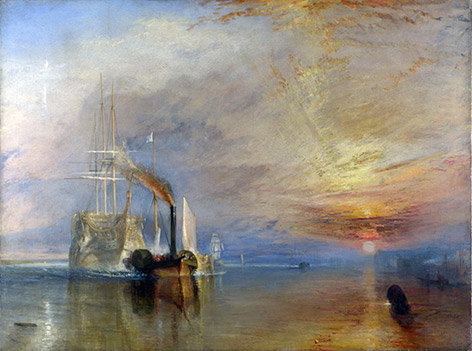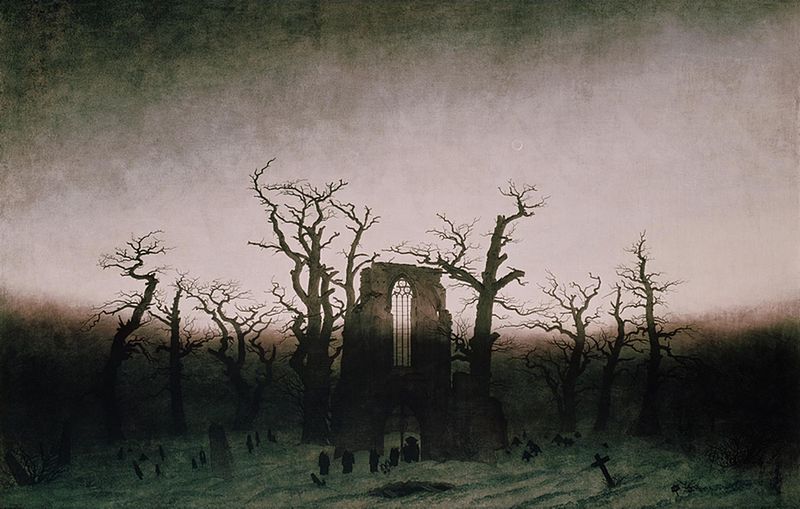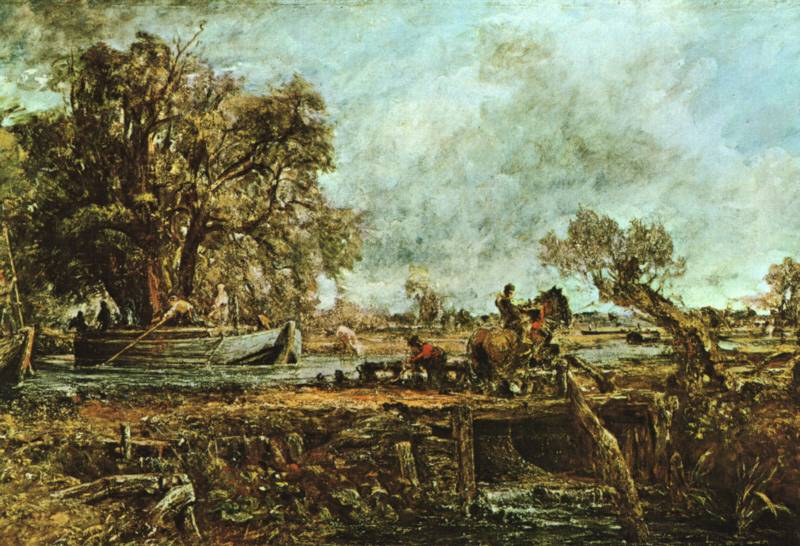Warning: Spoilers!
I’m not sure what happens more, seeing a piece of artwork that reminds me of a film, or sitting in the theatre watching a new release and being astounded that a scene or setting reminds me of a work of art. The world of Hollywood and visual arts inspire each other and bring about new and innovative ideas for the art world. While each field draws upon the other, a little bit of art history falls into our laps (next to the popcorn, of course).

Skyfall, Daniel Craig, 2012, picturehouseblog.co.uk
For anyone who saw the latest James Bond this past winter, you’ll recall that the National Gallery in London was the location of a secret weapon meeting with the infamous “Q”. The film used the story behind the painting to reinforce the question of Bond’s existence, the existence of the “00” agents, and the argument of Old versus New, and Traditional versus Modern.

J.W. Turner, The Fighting Temeraire, 1838, www.jmesbondlifestyle.com
The painting, “The Fighting Temeraire,” portrays a grand old warship being hauled off for scrap after playing a significant role in the Battle of Trafalgar in 1805. James Bond’s (Daniel Craig) abilities and usefulness is in question as the world becomes more high tech, and the enemies of the government are no longer armed with guns, but with laptops and smartphones.
For anyone who has not yet seen it, I highly recommend War Horse, not only for its touching story, but for the breathtaking cinematography. I was left in awe at the scenes of landscapes and World War I trenches and was reminded of the Nineteenth Century Romantic movement – both its aim at achieving the sublime – a sort of spiritual awe, and the vivid, colorful and spiritual landscapes of artists like Constable.

Caspar David Friedrich, The Abbey in the Oakwood, 1808-1810, wikipedia.org

John Constable, The Leaping Horse, 1825, ibiblio.org
Looking to Edward Hopper’s later years, after his studies of Modern America and the alienation of society as we progressed, his works of solitude and isolation in the seemingly Cape Cod setting begin to get more and more eerie.

Edward Hopper, House by the Railroad, 1925, www.empireonline.com
Is it any wonder that this painting of the House by the Railroad, has an odd, and desolate resemblance to the family home behind the Bates Motel in Alfred Hitchcock’s Psycho (1960)?

Bates Home, Psycho, 1960, retroweb.com

Alfred Hitchcock, Psycho, 1960, www.bubblews.com
Some directors base an entire blockbuster masterpiece off of one of the masters in order to set the theme, mood, or even color palette of a film. Just as the artists we know today put thought and theory into their compositional choices, the “painters” so to speak, of the film industry today sit and study the old masters and take great consideration into what they are putting onto our screens. There is meaning behind the madness – though maybe not Norman Bates’ madness!
Have any films ever reminded you of that one artwork, by that one artist? Share the resemblances with us on Twitter, Instagram or Facebook.
Related articles











I think it works the other way round as well, with films like the Third Man spreading a whole genre of photography. Film makers with a particular style like James Ivory and Ismail Merchant have spawned a rash of muted colour images.
Cheers – Jim